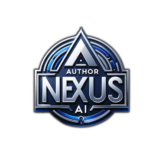Discover how tweaking the length of your book descriptions can significantly boost your book’s appeal within its genre in “How Can Adapting Book Description Length Enhance Your Genre’s Appeal?” By adjusting how much information you present and how it’s crafted, you can better capture the essence of your story and entice potential readers, making your narrative stand out in a crowded market. Have you ever wondered why some book descriptions grab your attention right away while others don’t quite hit the mark? The length of a book description can play a crucial role in how well it appeals to potential readers, especially within specific genres.
Understanding the Importance of Book Descriptions
Before diving into the specifics, let’s take a moment to understand why book descriptions are so important. When you pick up a book or browse online, the book description is one of the first things you look at, right? It’s your chance to gauge whether the book is worth your time and money.
A well-crafted description can spark interest, evoke emotions, and make you feel connected to the story or subject matter before you even start reading. Conversely, a poorly written or overly long description can turn you off, no matter how good the book might be.
Impact on Search Engine Optimization (SEO)
Did you know that the length of your book description can also impact your book’s visibility on search engines? Longer descriptions can include more keywords, making it easier for potential readers to find your book online. However, if the description is too lengthy, it might scare off readers who prefer a quick, to-the-point summary.
Genre-Specific Appeal
Different genres have different reader expectations when it comes to book descriptions. For instance, a romance novel might benefit from a more emotive and detailed description, while a thriller could excel with a punchy, concise summary that hints at suspense. Adapting your book description length to suit the genre can enhance its appeal and attract the right audience.
How to Determine the Ideal Description Length
There’s no one-size-fits-all answer when it comes to the ideal book description length. However, there are some guidelines you can follow:
- Know Your Audience: Different audiences have different preferences. For example, young adult readers might appreciate shorter descriptions, while adult fiction readers might prefer something more detailed.
- Consider the Platform: Descriptions on Amazon might need to be different from those on Goodreads or your personal website. Tailor your length accordingly.
- Test and Adapt: Don’t be afraid to experiment with different lengths and formats. Use analytics tools to see which versions perform best.
General Guidelines by Genre
Here’s a table to help you understand the general preferences for description lengths across various genres:
| Genre | Ideal Length (Words) | Description Style |
|---|---|---|
| Romance | 150-250 | Emotional and descriptive |
| Thriller | 100-200 | Concise with a focus on suspense |
| Science Fiction | 200-300 | Detailed with world-building elements |
| Fantasy | 200-300 | Descriptive with emphasis on setting |
| Young Adult | 100-200 | Brief and engaging |
| Non-Fiction | 200-400 | Informative and straightforward |
Tips for Crafting Effective Book Descriptions
Hook Your Reader
The first few sentences are crucial. This is where you need to hook your reader and give them a reason to keep reading. Whether it’s a provocative question, an intriguing statement, or a vivid scene, make sure your opening lines are compelling.
Highlight Key Elements
What are the key elements that make your book unique? Is it the plot, the characters, the setting, or the writing style? Highlight these aspects to give readers a taste of what they can expect.
Avoid Spoilers
While it’s essential to give readers enough information to pique their interest, avoid giving away major plot points or twists. Think of the description as a teaser rather than a summary.
Use Vivid Language
Vivid and evocative language can make your book description more engaging. Instead of saying, “The book is exciting,” you might say, “The book will keep you on the edge of your seat with its thrilling twists and turns.”
Include Testimonials
If you have testimonials from readers or critics, including a short quote can add credibility and make your book more appealing.
Proofread and Edit
Finally, make sure your description is free of typos and grammatical errors. A polished description reflects the quality of your book.
Genre-Specific Strategies
Romance
When writing a romance novel description, focus on the emotional journey of the characters. Highlight the central relationship and the obstacles they face. Use evocative language to convey the emotional stakes.
Example:
From the moment they met, Lily and Jack knew they were destined for each other. But with secrets from their past threatening to tear them apart, can their love survive? Dive into this heartwarming tale of love, loss, and redemption.
Thriller
For thrillers, the key is to build suspense. Keep the description concise and focus on the central conflict. Use language that evokes tension and excitement.
Example:
Detective Sarah Collins is on the hunt for a serial killer who’s always one step ahead. With time running out and the body count rising, can she catch the killer before it’s too late?
Science Fiction and Fantasy
In these genres, world-building is essential. Provide enough details to immerse the reader in your unique world, but don’t overwhelm them with too much information. Focus on the core plot and key characters.
Example:
In a dystopian future where technology controls every aspect of life, rebel leader John Carter fights to restore humanity’s freedom. But when an ancient alien artifact is discovered, it could change everything.
Non-Fiction
For non-fiction books, your description should highlight the problem your book addresses and the solutions it offers. Be clear and concise, and include any credentials or expertise that lend authority to your work.
Example:
Are you struggling with stress and anxiety? In this comprehensive guide, Dr. Emily Johnson provides scientifically-backed techniques to help you achieve a calmer, more balanced life. With practical exercises and real-life examples, this book is your roadmap to lasting well-being.
Adapting Description Length for Different Platforms
Amazon
On Amazon, the first few lines of your book description are crucial as they appear above the fold. Make sure these lines are compelling enough to make readers click “Read more.”
Amazon Example:
When Jane discovers a hidden room in her grandmother’s attic, she unearths a secret that could change everything. [Read more]
Goodreads
Goodreads readers often appreciate more detailed descriptions, as this platform is frequented by avid readers looking for their next great read.
Goodreads Example:
Jane has always been fascinated by her grandmother’s old house. But when she finds a hidden room filled with mysterious artifacts, she uncovers secrets about her family’s past that will change her life forever. As she digs deeper, Jane must confront her own demons and decide how far she’s willing to go to uncover the truth.
Personal Website
On your personal website, you can afford to be more flexible with the length and style of your description. Use this opportunity to connect with your audience on a more personal level.
Website Example:
For as long as she can remember, Jane has been intrigued by her grandmother’s old house. Its dusty corners and hidden nooks seemed to hold stories of their own. One day, she discovers a hidden room in the attic filled with mysterious artifacts. What she finds changes everything she thought she knew about her family – and herself. Join Jane on this thrilling journey of discovery and self-realization in my new novel, “The Hidden Room.”
Balancing SEO and Readability
While it’s essential to include keywords for SEO purposes, you don’t want your description to read like a list of search terms. Strike a balance by incorporating keywords naturally into a compelling narrative.
SEO-Optimized Example:
In “The Hidden Room,” a suspense thriller by [Author Name], Jane’s discovery of a long-forgotten room in her grandmother’s house unravels family secrets and leads her on a journey of self-discovery. Perfect for fans of suspense thrillers and mystery novels.
Testing and Iteration
A/B Testing
One of the best ways to determine the most effective description length and style is through A/B testing. Create two versions of your book description and see which one performs better in terms of clicks, conversions, and sales.
Reader Feedback
Don’t underestimate the value of feedback from your readers. Ask for reviews, and pay attention to reader comments. They can provide valuable insights into what works and what doesn’t.
Analytics Tools
Use analytics tools to track the performance of your book descriptions. Metrics like click-through rates, time spent on page, and conversion rates can help you gauge the effectiveness of different descriptions.
Conclusion
Crafting the perfect book description is both an art and a science. By understanding your genre, knowing your audience, and continually testing and refining your approach, you can create compelling descriptions that enhance your book’s appeal. Whether you’re writing a heart-wrenching romance or a high-stakes thriller, the right description can make all the difference in capturing your readers’ attention and driving sales.
So, the next time you sit down to write a book description, remember to consider the length, style, and key elements that will make your book stand out. Happy writing!
By focusing on crafting compelling, well-tailored descriptions, you’re not just summarizing your book – you’re giving readers a tantalizing glimpse into a world they’ll be eager to explore.



